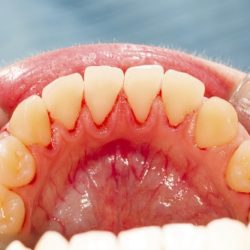 For individuals with severe gum inflammation, a periodontal procedure may be recommended to remove bacteria that have crept in beneath the gum line, making brushing and flossing teeth easier. A periodontal procedure also helps reshape the bone structure, strengthen the support and prevent future gum infection.
For individuals with severe gum inflammation, a periodontal procedure may be recommended to remove bacteria that have crept in beneath the gum line, making brushing and flossing teeth easier. A periodontal procedure also helps reshape the bone structure, strengthen the support and prevent future gum infection.
Preparation for a Periodontal Procedure
Before a periodontal procedure, an early visit to the periodontist could help a patient ready for the big day. The appointment, which occurs way earlier before he scheduled surgery day, aims at preparing the patient for surgery, psychologically and physically. A periodontist will advise a patient to stop taking specific medication, for example, pain relievers, blood thinners, and aspirin. Patients are also advised to quit smoking and alcohol at least 24 hours before the procedure.
The doctor might also prescribe antibiotics to reduce the chances of infection during the surgery. Patients need to be prepared before the surgery, for example, arranging for transport back home. Anesthesia and other sedatives administered during the surgery might not have worn off. Therefore, it would be difficult moving around alone.
During a Periodontal Procedure
Firstly, the doctor conducts a pre-operative examination to ensure further the surgery is safe to take place. The periodontists examine the teeth, gums, and mouth to check for health status during this examination. After reviewing for infections, the periodontist then discusses the complications and benefits and receives consent to continue the operation.
Depending on the procedure in question, the scope of things might occur. Most procedures take at most two hours. The process might require a patient to be partially or fully asleep; in this case, anesthesia is administered. It helps numb the area being operated on to reduce pain and discomfort. The periodontist makes incisions on the gum to expose the roots. This makes it easier to remove and clean the plaque and tartar, remove inflamed tissue, debris or infection. After cleaning, the periodontist carries out other procedures, for example, bone regeneration, reshaping the gum, or other scheduled procedures. After completion, the dentist stitches up the gum line into place. These will be removed in 7-10 days post-operation.

